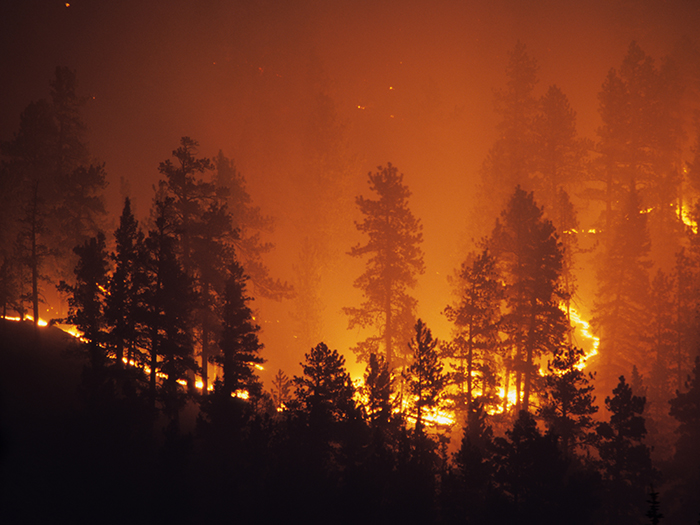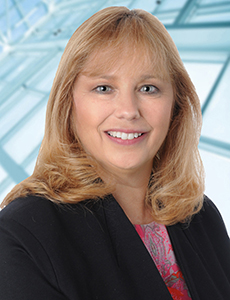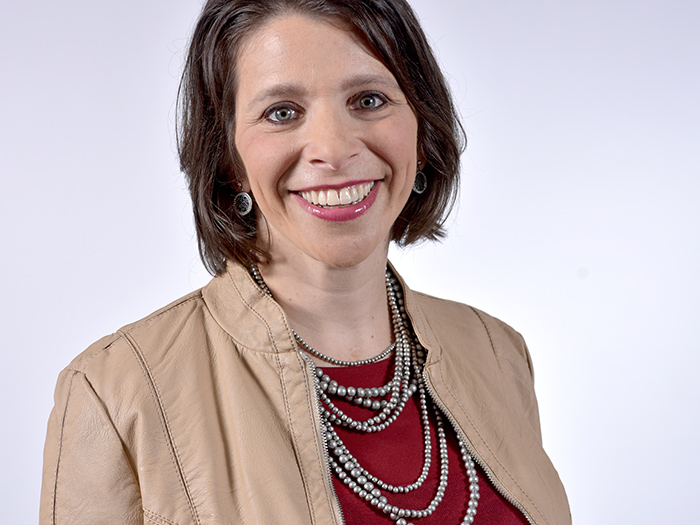Sponsored: Pinnacle Actuarial Resources
Wildfires Are Devastating. The Industry Must Invest in Catastrophe Modeling to Help Understand and Mitigate Increasing Risk

The Carr, Camp, Mendocino, Hill and Woolsey wildfires plagued the western United States in 2018. These five disasters burned 8.8 million acres, destroyed tens of thousands of homes and structures, killed more than 100 people and topped $11.8 billion in insurance claims.
Years of increasing severity and intensity of wildfires has insurers looking to understand the trends driving risk and design mitigating strategies for the customers they insure.
“There has been a moderate yet steady increase in acreage burned over the last 40 years,” said Linda K. Brobeck, FCAS, MAAA, CSPA, director and consulting actuary at Pinnacle Actuarial Resources, Inc.
“Although last year’s wildfires seemed more prevalent and widespread, 2017 and 2018 are not unique in terms of acres burned,” she said.
It’s the severe increase in economic losses, however, that are giving pause.
“2017 and 2018 had very large spikes in terms of economic losses. The industry is asking if these spikes are a trend, a cyclical high, or possibly an aberration.”
While property remains the biggest line of insurance impacted by greater wildfire risk, other coverages can come into play. Brobeck mentioned crop, automobile, health care and business interruption as a few notable examples.
“The focus has been on property coverage, commercial and personal lines, but there are a number of other lines of insurance that are also affected by wildfires,” she said. “Business interruption is a particularly impacted area. Commercial disruption happens whether or not there’s actually a fire loss to that business.”
Specifically, evacuations, closed roads and limited access to areas can strain a business that didn’t necessarily have physical, fire-related property damages.
The insurance industry is focusing on identifying the key drivers of wildfire risk to effectively price these disasters.
“There are key drivers that impact the frequency and severity of wildfires,” she said. “It’s extremely important to understand what those drivers are and how they’re impacting the economic impact of these disasters.”
The Key Drivers Raising the Total Cost of Wildfire

Linda K. Brobeck, FCAS, MAAA, CSPA, Director and Consulting Actuary at Pinnacle Actuarial Resources, Inc.
Climate and weather are obvious drivers of wildfire risk. Droughts, heat waves, dry brush and high winds all contribute to spreading and intensifying burns.
But climate change is only a part of the whole.
“Wildfires are part of nature and occur naturally as part of the ecosystem,” explained Brobeck. “Over the course of the last few decades, people are moving into lands and developing properties where natural burns have historically taken place. Socioeconomic forces and land usage are now driving the risk and rate of wildfires.”
Brobeck identified the area people are moving into as the Wildland-Urban Interface (WUI) — a zone of transition between wildlands and human development. Homes and businesses are starting to appear more frequently in these places, getting closer to forests and brushlands already at-risk.
According to data collected from the 2010 census, the number of Americans living in the Wildland-Urban Interface has doubled since 1970. Brobeck suspects the percentage of homeowners in the WUI is only likely to grow.
“Some estimates indicate, particularly in California, that 60% of new homes constructed are being built in the Wildland-Urban Interface,” she said. “We are expecting that the 2020 census will give us an even more accurate understanding of just how many people are moving into these at-risk areas.”
With new builds come better, more expensive properties. New construction adds to the value of the homes in the communities creeping closer to the wildland. That also adds to the overall cost of loss, post-wildfire.
Add human error to the mix and wildfires increase year after year. The human factor and human action account for a significant portion of fires — a full 85%, according to the National Park Service.
“It’s a domino effect,” said Brobeck. “Climate is drying out land; land is increasingly occupied by more and more businesses and homes and more and more people. As a result, accidental fires that turn into wildfires impacting property become more and more frequent.”
Reviewing the Impact Wildfires Have on Insured and Insurers
Knowing what drives wildfires enables insurance carriers to know what to look for when pricing risk.
So far, according to Brobeck, homeowner rates are starting to increase in the areas most affected by wildfire, particularly California.
“Not every homeowners’ insurance premium is increasing, but certainly in impacted areas, rates are increasing. On a statewide basis, it’s a 7% average increase, but areas with high wildfire risk may see rates double,” she said.
On the commercial side, Brobeck said, rate increases are a little harder to gauge, but she has seen insurance companies start to restrict where they write.
“Some insurers are concerned about writing policies in areas that have high wildfire risk,” she said. “We have seen evidence that some policyholders are having difficulty finding insurance.”
The State of California has been working to help fill the gap. One bill passed by the state has required the California Department of Insurance to create a commission on catastrophic wildfire cost and recovery.
“This is a commission set to prepare a report every two years,” explained Brobeck.
Together, insurance experts on the commission compose a list of recommendations, including an overview of what they’re seeing in the space and what rates are projected to look like as economic losses increase.
Picking the Right Model for Wildfire Risk
Insurance companies, too, are working toward solutions. One way to do that, said Brobeck, is through catastrophe (CAT) modeling.
“Insurers currently do not employ models quite as prevalently for wildfires as they do for hurricanes, but it is an increasing practice.”
Modeling firms continue to release new and improved wildfire models each year, incorporating as many variables as possible, like weather patterns and vegetation. Satellite and aerial imaging are also coming into play, and several firms are taking the big data sets they’ve gathered and using machine learning to model wildfire risk.
“The question then becomes how wildfire models will be utilized by the insurance industry,” said Brobeck.
The team at Pinnacle is working hard to survey the entire existing pool of vendors and models.
“While we’re not currently creating wildfire models, we are working closely with our clients to help them find the resources that make the most sense for them and their needs,” said Brobeck.
Pinnacle’s understanding of the industry and their knowledge of their clients’ businesses allows the firm to evaluate all potential resources and models that work best with their clients’ goals.
“There are a number of ways to use what we learn from models and apply the insights that are gained from those models into business practices,” said Brobeck.
“We want to help companies leverage and utilize them in the most beneficial and strategic way possible.”
To learn more, visit https://www.pinnacleactuaries.com/.
This article was produced by the R&I Brand Studio, a unit of the advertising department of Risk & Insurance, in collaboration with Pinnacle Actuarial Resources, Inc. The editorial staff of Risk & Insurance had no role in its preparation.










